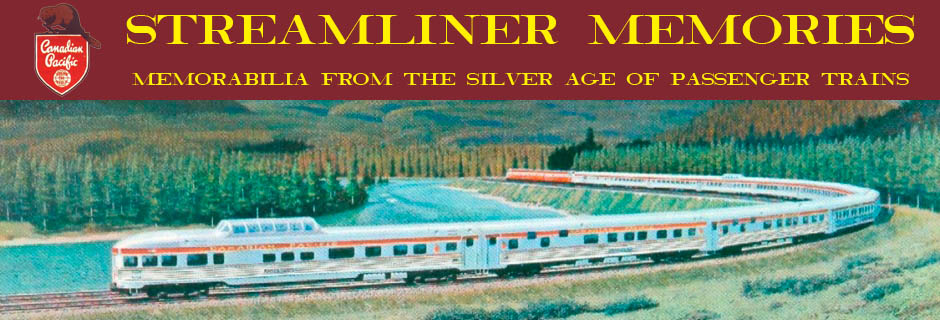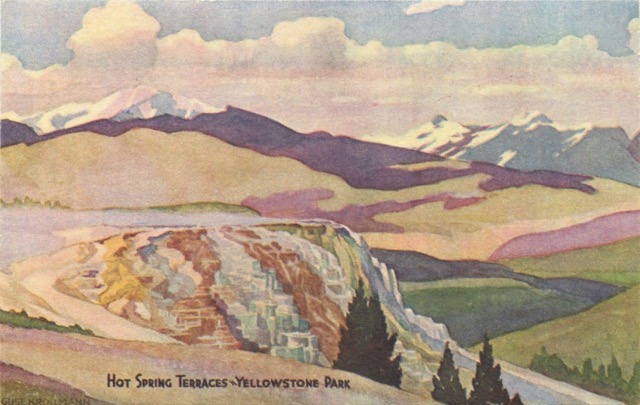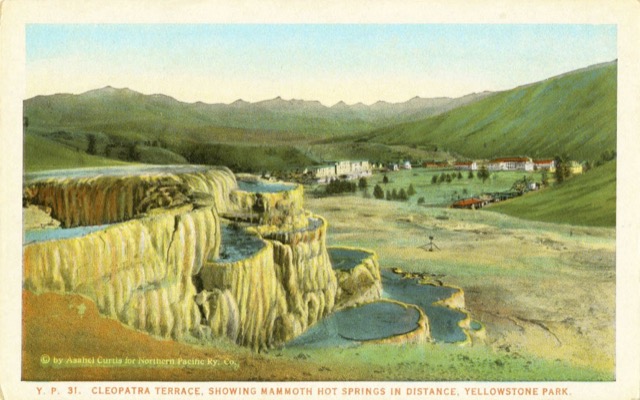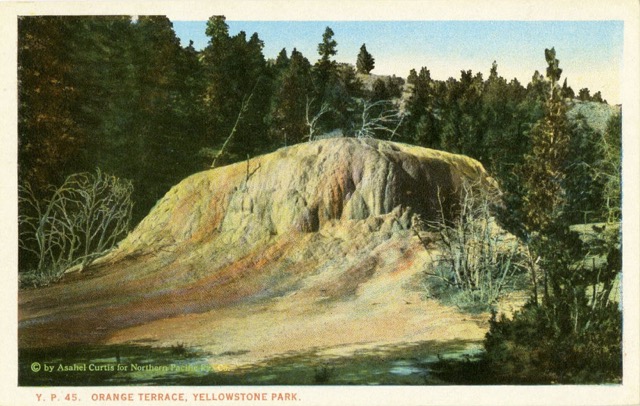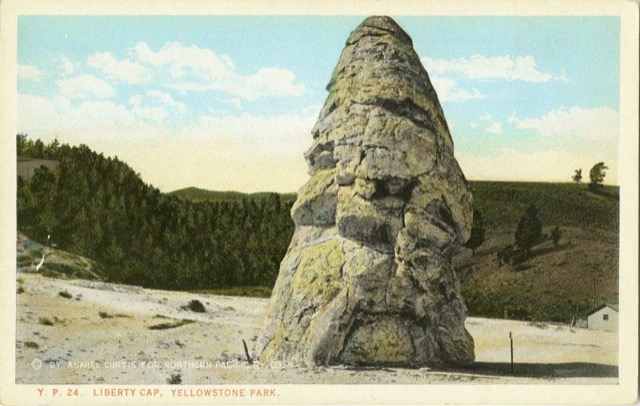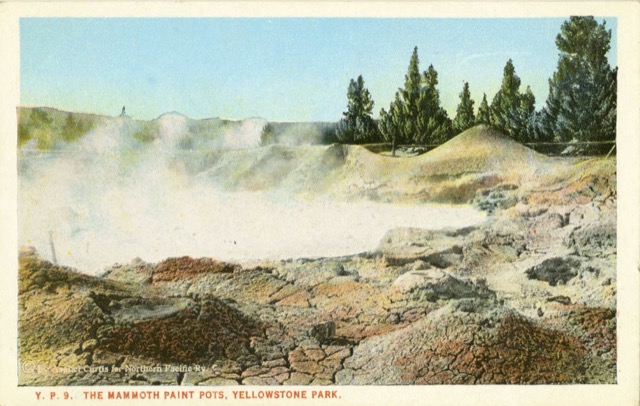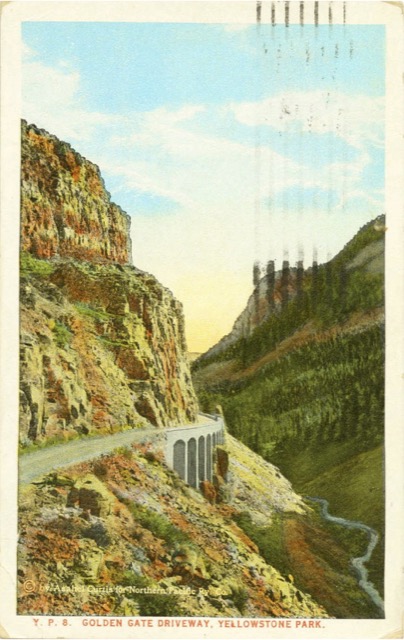From the Gardiner entrance, Mammoth Hot Springs was the first stop in Yellowstone Park. Mammoth was surrounded by terraces of a kind of limestone known as travertine.
This color card is from a painting by Gustav Krollman, who made many more detailed paintings for Northern Pacific posters. The back of the card mentions the North Coast Limited but says nothing about air conditioning, suggesting it is from the early 1930s.
This is a more realistic view of one of the terraces, with the Mammoth Hotel shown in the background. This and the remaining cards were not issued by the railway but are based on Asahel Curtis photos taken for the Northern Pacific.
Here’s a travertine terrace identified as the Orange Terrace, which apparently still exists. The orange color comes from bacteria that grow in the hot water; terraces lose their color when the water stops flowing.
Liberty Cap is another feature that can still be found in the Mammoth area. As noted in this history, it was named in 1871 but many people used a more phallic name instead.
Another card based on an Asahel Curtis photo taken for the Northern Pacific.
From Mammoth, you can go east on a road that leads to Yellowstone Canyon or south on a road that leads to the geyser basins. This bridge, ostentatiously called the Golden Gate, is on the latter road.
